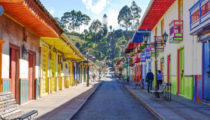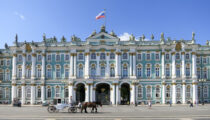May 15, 2012
An Interview with One of Our Birding and Travel Experts
Artisans of Leisure travel specialist, Stephanie, tells us how she has been lucky to be able to combine her twin passions–birding and travel–since she was a child.
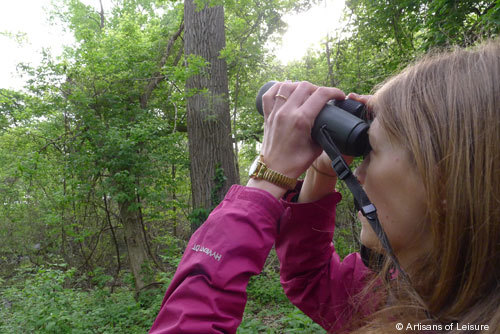
Q: When and how did you become interested in birding?
A: My mom has been birding forever, and she would take me along with her when I was a kid. Eventually it clicked for me, and I’ve been doing it ever since. I was very active in high school, volunteering for Seattle Audubon, going on birding trips with other teens, and even participating in birding competitions around the country. I had a bit of a hiatus in college and while living in Europe, but I’m getting into it again now that I’m back in the US.
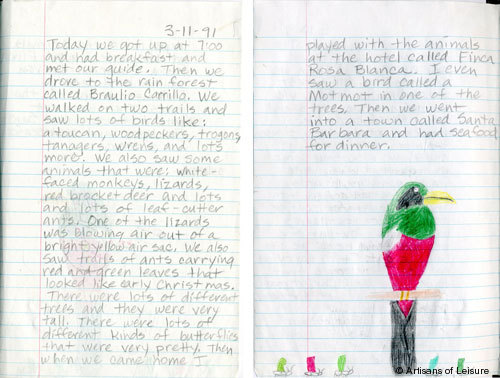
A: Birding is great because it gets me out into nature. It also makes me more aware, so I end up seeing all kinds of interesting things, from plants to animals to bugs and butterflies. It’s fun because I can do it anywhere, and it’s an excellent excuse to travel!
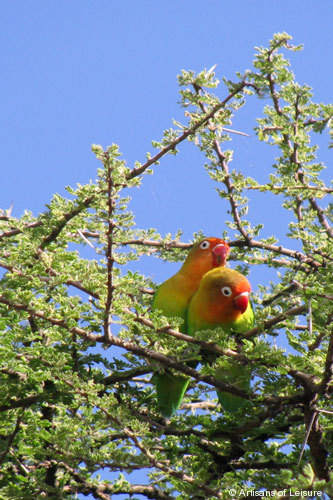
Q: What were some of your earliest birding experiences?
A: As a kid, I remember lots of trips north to the Skagit Valley or across the mountains to eastern Washington. I would mostly color in the back seat, looking up occasionally at a Horned Lark or a flock of Snow Geese. I remember one particular spot in eastern Washington where my mom would blast a cassette recording of a Pygmy Owl from the car. This attracted lots of birds, which would come in to check out the sound and see if it was a potential threat. I can still hear that sound and picture that dusty back road.
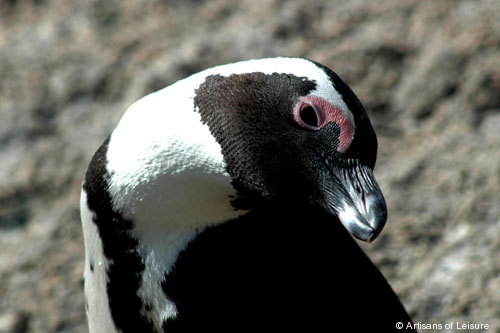
I also remember my first international trip: birding in Costa Rica, where I had my eighth birthday. We watched the colorful motmots at Finca Rosa Blanca, our lovely inn near Braulio Carillo National Park, and had our food stolen by the precocious monkeys by the beach at Manuel Antonio. I love looking back at the journal I kept on that trip.
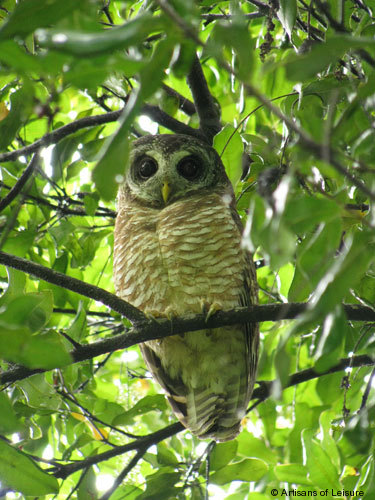
Q: Is birding just an excuse for travel, or is it the other way around?
A: It can be both. For example, I don’t know that I would have ever visited Ghana if it weren’t for birding. On the other hand, when my husband and I decided to go to Cambodia for our honeymoon, I knew I had to take advantage and do some birding. I saw some great stuff, like hornbills, sunbirds and paradise-flycatchers, and even convinced him to come out with me a few times! If a destination has great cultural touring and also offers good birding, it’s like the icing on the cake for me.
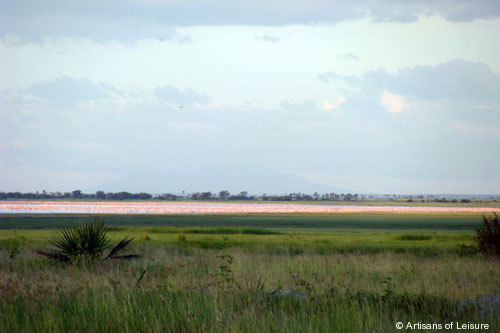
Q: What was your most recent birding trip?
A: I just got back from a weekend in Ohio with my parents. They’ve been going to Magee Marsh State Park, which is a migration hotspot, for about eight years. It was my first time, and I’ve never experienced birding like it. Over the years, the area has taken on a festival atmosphere during migration. Now they even call it “The Biggest Week in American Birding.” They organize lectures and events, and there are special birding guides to help with spotting and identification. Thousands of people come, and I’ve never birded with so many people! The boardwalk was absolutely clogged. But having so many eyes (and the Twitter hashtag #BiggestWeek) helps to find good stuff, like the Black-billed Cuckoo or the very rare Kirtland’s Warbler, both of which were life birds for me. Overall, we saw around 20 species of warblers, plus several other species, in just one morning. I want to go back next year and stay longer!
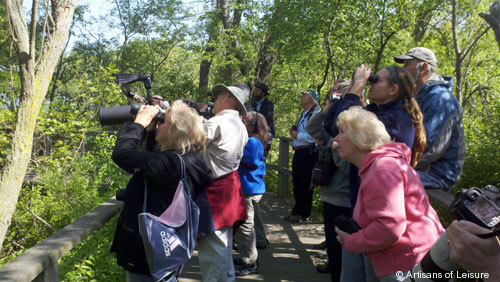
Q: Where would you most like to go for birding in the future?
A: Turkey is one of my favorite destinations for cultural touring, but its position between Europe, Asia and Africa makes it a hotspot for migrating birds as well. I’d love to go back and do some birding there. I also didn’t do enough birding when I lived in Spain, and like Turkey, it’s on a major migration route. It offers fabulous birding at some of its national parks, such as Monfrague and Donana.
Artisans of Leisure arrange private tours to Sri Lanka on a request basis. It is a bird-lover’s paradise, and I have been salivating over the idea of combining cultural touring in the temples, tea plantations and colonial cities with birding and wildlife spotting in the national parks.
Also on my “to bird at some point in my life” list are Papua New Guinea, Galapagos and Antarctica.
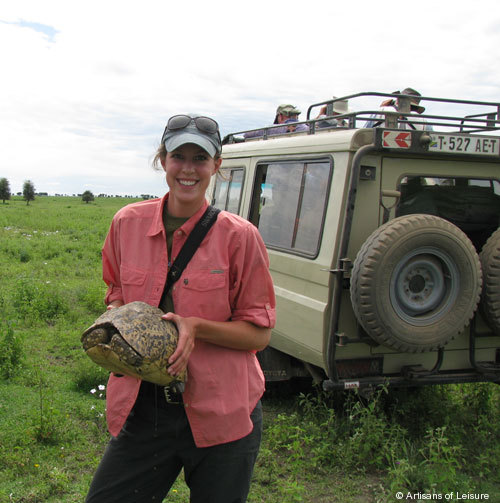
Q: Of all the places you’ve visited for birding, what has been your favorite so far?
A: Tanzania, hands down. It’s such a beautiful country, and birding was a wonderful way to experience it. There was always something to look at when the animals weren’t around, plus being attentive to the birds helped us find the animals–a win-win! Artisans of Leisure currently arranges private tours of Tanzania on a request basis. Keep an eye out for our new Tanzania and Kenya private safari tours–coming soon!
Q: Is it easy to fit birding into cultural or other touring while traveling?
A: Absolutely. The great thing about birding is that you can do it anywhere, and you don’t need any special equipment, though binoculars are obviously helpful. Whether you’re at a Mexican resort or a European capital, you’re never too far away from a patch of nature where you can spot a few species. Taking a day excursion to a nearby park or forest is a great way to sneak some birding into a trip.
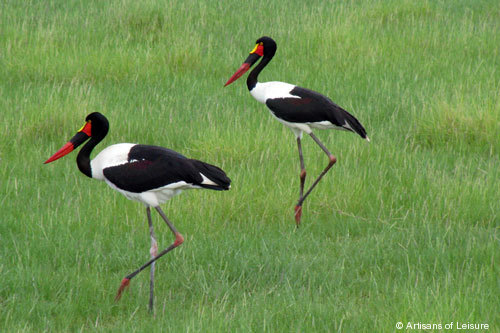
Q: Have you ever planned a trip around seeing a certain bird?
A: Well, there is certainly no other reason to visit the city dump in Brownsville, TX! (It’s the only place in North America where you can see the Tamaulipas Crow.)
My family’s trip to Ghana was somewhat planned in this way, since it’s currently the most stable country where you can see the White-necked Picathartes, which is a very rare and endangered bird. But usually we plan our trips based mostly on how “birdy” a location is.
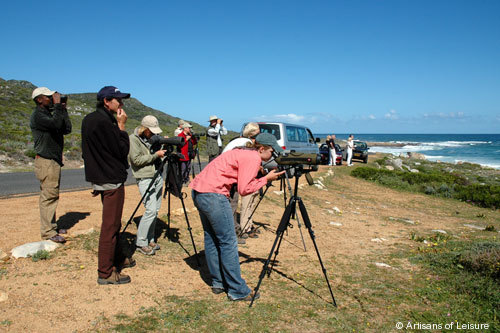
Q: Do you keep a bird list?
A: Not anymore. I kept a North America list in high school when I was competitive, and I know that I have over 500 species, but I stopped counting. I like to keep a checklist when I travel, to remember what I’ve seen, but I’m not usually too concerned with the number.
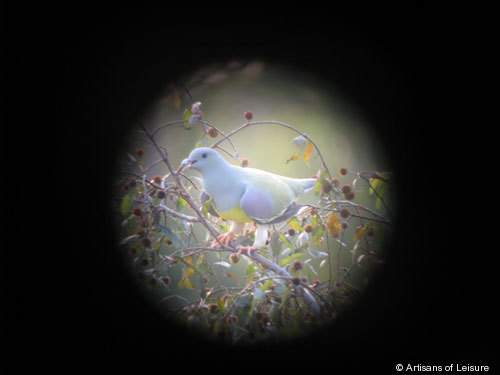
Q: Do you think of birding as a kind of collecting?
A: A lot of birders do (we call them “listers”), but I don’t. I’m more interested in observing their behavior and enjoying the experiences that birding provides than just ticking a box and moving on.
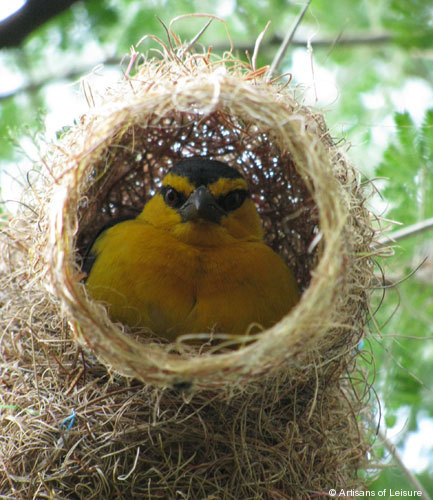
Q: Do you have any good stories from bird watching–particularly difficult conditions, serendipitous spottings, etc.?
A: Looking for the picathartes in Ghana was one of the most difficult birding experiences I have ever had. We had to hike for about an hour through the hottest, densest jungle I’ve ever been in, scramble up a steep hill, and then wait silently by the rocky overhang where the birds build their mud nests. We sat there for about an hour, but when the bird finally came in, it was so worth it.
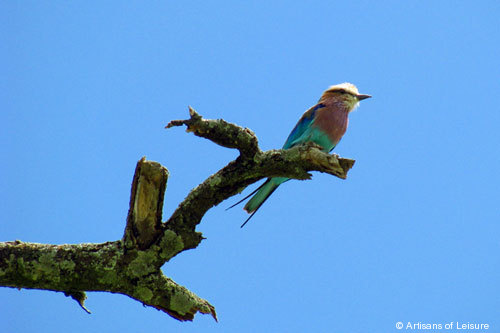
Q: What kind of binoculars do you use?
A: Swarovski EL 8.5x
Q: Any other specialized gear you take with you?
A: I don’t, but if any of my birding companions has a spotting scope with them, I take full advantage!
Q: What are your favorite bird films and books?
A:
• The Life of Birds – David Attenborough’s fascinating 1998 series for the BBC
• The Big Year – Hollywood mostly gets it right, for once, in this 2011 comedy starring Jack Black, Steve Martin and Owen Wilson
• The Sibley Guide to Birds – My favorite field guide for North American birds
• Kingbird Highway – Renowned birder Ken Kaufman’s memoir of the year he dropped out of high school to bird the country
• To Kill a Mockingbird – Okay, not actually about birds, but still a great book!
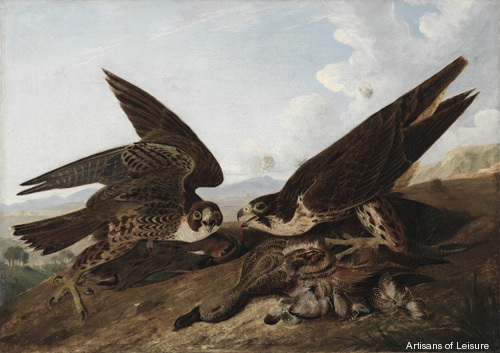
Q: Have you ever seen any bird exhibitions at museums or elsewhere that were particularly memorable?
A: I love the collection of decoys at the Shelburne Museum in Vermont, and the National Geographic Society has had some wonderful photography exhibitions. A pair of 17th-century Japanese screens in the Seattle Asian Art Museum, gilded and painted with the silhouettes of hundreds of crows, is also dear to my heart.
There are also several artists whose bird representations I look for wherever I go:
• Ito Jakuchu – His 18th-century painted scrolls are exquisite
• John James Audubon – Audubon primarily worked in watercolor, but I saw a wonderful oil painting of two Peregrine Falcons at the Cleveland Museum of Art on my recent trip to Ohio. An early American ornithologist, he was the first to present birds in a natural way. His The Birds of America is the original field guide
• Constantin Brancusi – so sleek, modern and minimalist
• Joan Miro – About as abstract as it gets: he uses curved lines to represent flight paths and creates imagination-bending birds
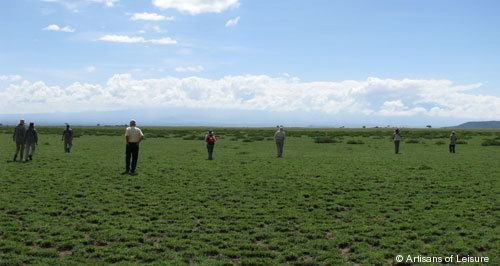
Q: How’s the birding in New York City?
A: It’s great! Central Park is a hotspot during migration, and New York has one of the country’s most active Audubon Society chapters, which sponsors lots of outings to parks and wetlands all over the city.
Q: What kind, if any, of birding communities are you active within (local, virtual, etc)?
A: I recently became a member of NYC Audubon, and want to get more involved. I also signed up for eBird, a free online service where you can enter the birds you see on any given outing. Your list serves as a record for you but also provides population and distribution data that helps ornithologists and conservationists.
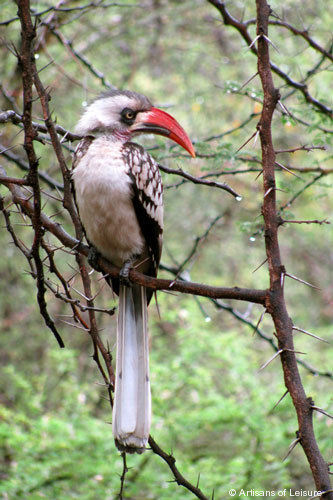
Q: Have you ever studied birds from a scientific perspective, e.g. banding or tracking birds?
A: I certainly wouldn’t call myself an ornithologist, but I have volunteered to help with mist netting and banding a few times.
Q: Are there any stereotypes about birders you’d like to dispel?
A: Yes. First, birding doesn’t necessarily mean sitting in a duck blind all day waiting for something to fly by. Usually it involves taking a nice walk, hike or drive and seeing what you see along the way.
Also, birders aren’t all tunnel-vision bird nerds or cocky hotshots who brag about their life lists. Sure, you get a few who are really serious and totally focused on birds, but most birders I know have a wide range of interests and knowledge.
Q: For travelers who love birding and who are considering an Artisans of Leisure trip, what should they know?
A: If you want to build birding into an itinerary, we can do that! Of course, some destinations are “birdier” than others, but even in most cities you’re only an excursion away from a nature park where you can add a few species to your list.
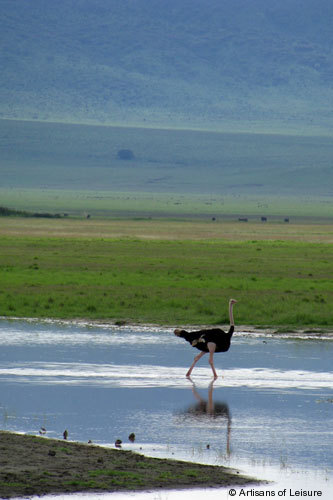
Q: What Artisans of Leisure destinations would you recommend for incorporating birding?
A: You can find good birding in any of our destinations, but I especially recommend:
• India
• Australia
• Bhutan
• Malaysia
• Spain
• Turkey
• Jordan
• South Africa
• Botswana
• England
• Nepal
• Ecuador
Destinations: Africa, Asia, Australia, Bhutan, Botswana, Cambodia, Ecuador, England, Europe, Galapagos, India, Jordan, Latin America, Mexico, Middle East, South Africa, Spain, Sri Lanka, Tanzania, Turkey
Tags: animals, art, Artisans of Leisure, artists, Bird, bird representations, bird tours, birding, birding expert, birding trips, birdwatching, books, collecting, cultural touring, customized tours, experts, family travel, films, insects, international, international birdwatching tours, luxury, Mediterranean, museums, national parks, nature, Papua New Guinea, private, private birding trips, recreation, South America, tour operators, tours, travel, Twitter, UK, wildlife, wildlife tours

 MENU
MENU

